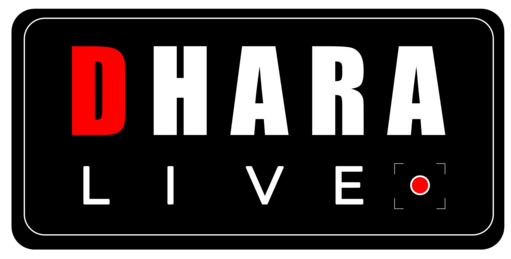Mutual Funds Vs FD: 2025 में जब हर कोई निवेश को लेकर सतर्क और स्मार्ट बनना चाहता है, तो Mutual Funds और Fixed Deposits (FD) दो सबसे पॉपुलर ऑप्शन्स हैं। इन्वेस्टमेंट के फायदे हर कोई जानता है, और यही वजह है कि आजकल हर कोई अपनी कमाई का कुछ हिस्सा कहीं न कहीं इन्वेस्ट करता है। लेकिन confusion तब होती है, जब हमें यह समझ नहीं आता कि किस चीज़ में इन्वेस्ट करने से ज्यादा फायदा होता है। ज्यादा return तो हर किसी को चाहिए, लेकिन किस में मिलेगा, यही आज का सवाल है।
Mutual Funds और Fixed Deposits (FD) दोनों में से कौन-सा विकल्प आज के आर्थिक माहौल में बेहतर रिटर्न, कम जोखिम और liquidity प्रदान करता है? आइए दोनों को हर practical parameter पर detail में समझते हैं।
1. Safety & Risk: कौन है ज़्यादा Safe?
FDs: बैंक द्वारा offer की जाती हैं, fixed return होता है और principal amount ₹5 लाख तक DICGC द्वारा insured होता है।
Mutual Funds: Market-linked होते हैं – यानी returns fluctuate करते हैं। Equity funds में ज़्यादा volatility होती है, जबकि debt funds कम जोखिम वाले माने जाते हैं।
FD एक safe option है, लेकिन Mutual Funds में ज्यादा long-term growth potential है। Low-risk investors के लिए FD बेहतर, risk-takers के लिए mutual funds।
2. Return Comparison in 2025
FDs: PSU और private banks 6%–7.5% तक का annual interest दे रहे हैं। लेकिन inflation-adjusted real return 2%-3% ही रह जाता है।
Mutual Funds: Debt Funds: 6–8% तक steady return, better than FD for tax-efficient planning। Equity Funds: 10–14% तक का CAGR (3 साल+ horizon पर)। Higher volatility लेकिन higher reward।
अगर आप Long-term wealth creation का सोच रहे हैं, तो equity mutual funds बेहतर हैं। FD short-term goals के लिए ही उपयुक्त।
3. Liquidity & Lock-in
FDs: Fixed tenure होता है (1–10 साल तक)। Premature withdrawal पर 0.5–1% interest penalty लगती है।
Mutual Funds: Open-ended funds में किसी भी समय buy/sell संभव है। ELSS में सिर्फ 3 साल का lock-in होता है, जो tax-saving category में आता है।
Mutual Funds liquidity के मामले में ज़्यादा flexible हैं, खासकर emergency fund या short-term need के लिए।
4. किस पर कम टैक्स लगता है?
FDs: Earned interest पूरी तरह taxable है – आपकी income slab के हिसाब से। Senior citizens को ₹50,000 तक की छूट मिलती है (80TTB)। Equity Funds लेते हैं, तो 1 साल से ज़्यादा रखने पर 10% LTCG लगता है (₹1 लाख तक tax-free)। इसलिए Tax-saving ELSS mutual funds ज्यादा efficient हैं। FD interest पूरी तरह taxable होता है।
5. Inflation Protection
FDs में Fixed return होने की वजह से ये inflation को beat नहीं कर पाता – real value time के साथ घटती है। जबकि Mutual Funds खासकर equity funds inflation-beating returns देते हैं – यानी wealth का वास्तविक मूल्य बना रहता है! Inflation को beat करने के लिए Mutual Funds ज्यादा मजबूत साबित होते हैं।
6. Investment Flexibility
FDs में एकमुश्त रकम से invest करना होता है – ₹5,000 से लेकर लाखों तक! जबकि Mutual Funds: SIP के जरिए ₹500/₹1,000 महीने से भी शुरुआत की जा सकती है – जो disciplined investing को बढ़ावा देता है। इसलिए Mutual Funds छोटे निवेशकों के लिए भी accessible हैं, जो monthly invest करना चाहते हैं।
Conclusion
अगर आप एक low-risk, capital-safe option चाहते हैं – तो FD एक भरोसेमंद विकल्प है, खासकर short-term या senior citizens के लिए। लेकिन अगर आपका लक्ष्य है wealth creation, inflation-beating returns और tax efficiency, तो Mutual Funds 2025 में एक smart और strategic choice हैं। हर निवेशक की financial स्थिति और risk appetite अलग होती है – इसलिए बिना तुलना किए कोई भी विकल्प न चुनें। Compare करें, समझें, और फिर invest करें!
Latest News in Hindi
Gold Vs Real Estate Investment 2025: कौन-सी Asset बनाएगी आपकी Future Wealth? जानिए Expert Comparison

A research-based writer, content strategist, and the voice behind Dhara Live. With 7+ years of experience in print and digital media, I specialize in creating stories that are not just informative, but also engaging, thought-provoking, and search-friendly.
Over the years, I’ve worked with media houses like Divya Himachal, created academic content for Chandigarh University, and written everything from YouTube explainers to press releases. But what drives me the most is writing content that sparks awareness, curiosity, and real conversations.
At Dhara Live, I focus on trending topics—from geopolitics, health, and finance to AI—all explained in details, the way we naturally speak and think. I believe every reader deserves content that is accurate, easy to understand, and never boring.

